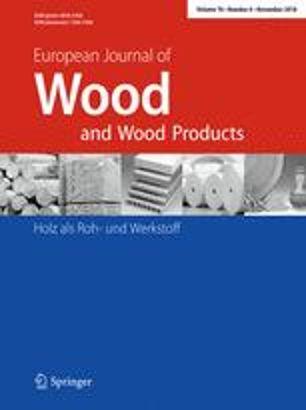
Enhanced bonding strength of heat-treated wood using a cold atmospheric-pressure nitrogen plasma jet
14:32 - 19/03/2019
Natural durability of the culturally and historically important timber: Erythrophleum fordii wood against white-rot fungi
Shrinkage and swelling behavior of archaeological waterlogged wood preserved with slightly crosslinked sodium polyacrylate
Natural durability of Erythrophleum fordii Oliver against white rot fungi
Shrinkage and swelling behavior of archaeological waterlogged wood treated with polyacrylic acid resin
Athour:Thi Hai Van Nguyen, Tat Thang Nguyen, Xiaodi Ji, Van Dinh Nguyen, Minghui Guo
Abstract
In this work, the bonding strength enhancement of heat-treated wood using a cold atmospheric-pressure nitrogen plasma jet for several lengths of treatment time was investigated. The enhancement of bonding strength was assessed by measurement of the contact angle of aqueous adhesive and water borne finish along with determination of compressive shear strength of wood samples bonded with an aqueous adhesive and pull-off strength of a water borne finish coating on wood samples. Additionally, the elemental composition and crystallinity index of the heat-treated wood surface were characterized using X-ray photoelectron spectroscopy and X-ray diffraction. As expected, the measurements demonstrated that contact angle decreased after atmospheric-pressure nitrogen plasma jet treatment, and the optimal treatment time was 100 s. X-ray photoelectron spectroscopy shows that hydrophilic groups such as C=O, OH, and COOH appeared on the surface of the HW. The atmospheric-pressure nitrogen plasma jet treatment had a positive effect on the crystallinity of heat-treated wood because of a slight degradation of hemicelluloses. Increasing the bonding strength of heat-treated wood is beneficial for broadening the fields of its applications.
https://link.springer.com/article/10.1007/s00107-018-1351-7


